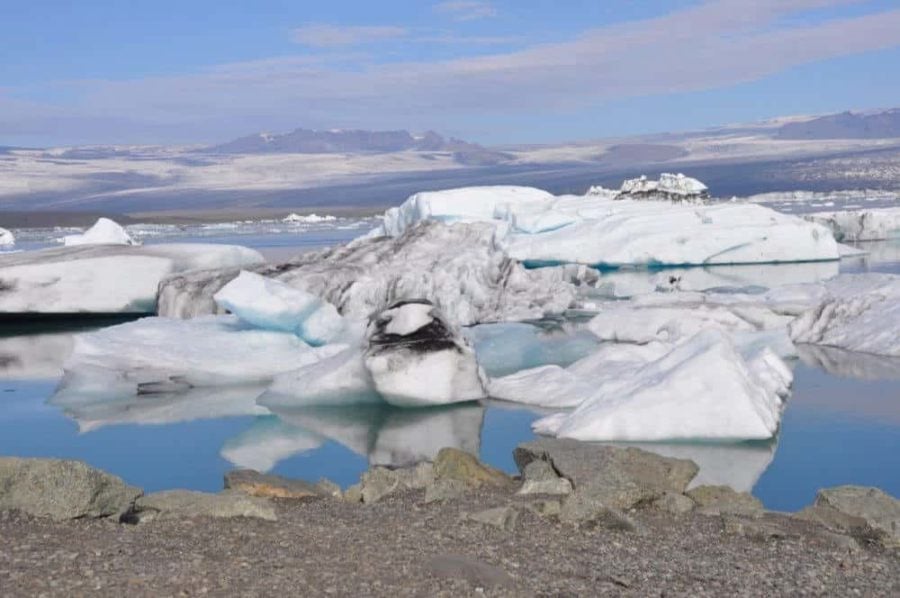Rapid changes in terrain are taking place in Canada’s high Arctic polar deserts due to increases in summer air temperatures.
A McGill-led study published recently in Environmental Research Letters presents close to 30 years of aerial surveys and extensive ground mapping of the Eureka Sound Lowlands area of Ellesmere and Axel Heiberg Islands located at approximately 80 °N. The research focuses on a particular landform (known as a retrogressive thaw slump) that develops as the ice within the permafrost melts and the land slips down in a horseshoe-shaped feature. The presence of these landforms is well documented in the low Arctic. But due to the extremely cold climate in high Arctic polar deserts (where average annual ground and air temperatures are -16.5 °C/2.3 °F, and -19.7 °C /-3.46 °F, respectively), and the fact that the permafrost is over 500 metres (or about 1/3 of a mile) thick, it had been assumed this landscape was stable. But the McGill-led research team found that this has not been the case.
“Our study suggests that the warming climate in the high Arctic, and more specifically the increases in summer air temperatures that we have seen in recent years, are initiating widespread changes in the landscape,” says Melissa Ward Jones, the study’s lead author and a PhD candidate in McGill’s Department of Geography.
The research team noted that:
- There has been a widespread development of retrogressive thaw slumps in high Arctic polar deserts over a short period, particularly during the unusually warm summers of 2011, 2012 and 2015;
- That the absence of vegetation and layers of organic soil in these polar deserts make permafrost in the area particularly vulnerable to increases in summer air temperatures;
- Despite its relatively short duration, the thaw season (which lasts for just 3-6 weeks a year) initially drives the development of slumps and their later expansion in size, as their headwall retreats; and
- Over a period of a few years after the initiation of slumps, study results suggest various factors related to terrain (e.g. slope) become more important than air temperature in maintaining active slumps.
“Despite the cold polar desert conditions that characterize much of the high Arctic, this research clearly demonstrates the complex nature of ice-rich permafrost systems and climate-permafrost interaction,” adds Wayne Pollard, a professor in McGill’s Department of Geography and co-author on the study. “Furthermore, it raises concerns about the over simplification of some studies that generalize about the links between global warming and permafrost degradation.”
To read “Rapid initialization of retrogressive thaw slumps in the Canadian high Arctic and their response to climate and terrain factors” by Melissa K. Ward Jones, Wayne H. Pollard and Benjamin M. Jones in Environmental Research Letters: https://iop.altmetric.com/details/60342117
The research was funded by the Association of Canadian Universities for Northern Studies (ACUNS), the Natural Sciences and Engineering Research Council (NSERC), the Fonds de recherche du Québec – Nature et technologies (FRQNT), David Erb Fellowship, Eben Hobson Fellowship and the Northern Scientific Training Program (NSTP).


